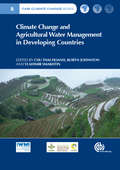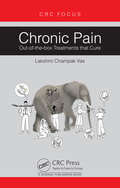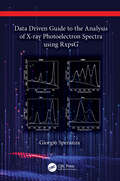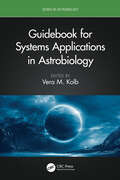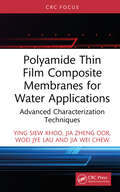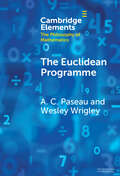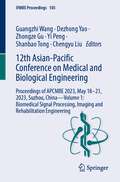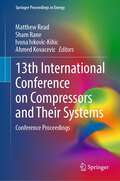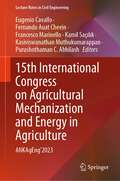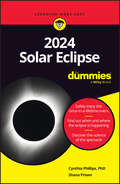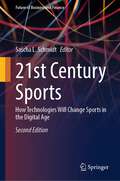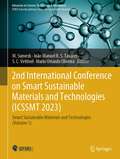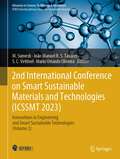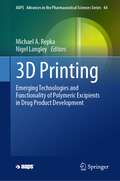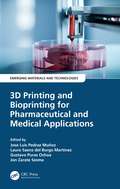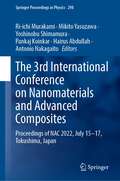- Table View
- List View
The Armchair General: Can You Defeat the Nazis? (The Armchair General #1)
by John Buckley***AVAILABLE FOR PRE-ORDER NOW***A ground-breaking approach to history where YOU choose the fate of WWII - perfect for readers of Bletchley Park Brainteasers and The GCHQ Puzzle Book.____________________________________________________________________________TAKE THE HOTSEATAssume the role of real Generals, Leaders, Soldiers and Intelligence Officers in the Allied Forces during WWII, including Winston Churchill and President Eisenhower.EXAMINE THE INTELLIGENCEExplore eight key moments of the war with real contemporaneous intelligence: Britain's Darkest Hour, 1940; The War in North Africa; Stalin's War on the Eastern Front; The Pacific Battle of Midway; The Dresden Bomber Offensive; Casablanca; Arnhem and Operation Market Garden; The Bomb and Hiroshima.CONSIDER THE SCENARIO & MAKE YOUR DECISIONFrom battlefields to war cabinets, each tactical and strategic decision you make leads to a different outcome.Will you follow the path of the past - or shape a new history?________________________'An original and exciting approach . . . Buckley is one of our very finest historians. The Armchair General adds enormously to our understanding of the conflicts.' JAMES HOLLAND'A reminder that history is a never ending now, a relentless and endless present that comes without the luxury of hindsight.' AL MURRAY, comedian and writer
Farewell to Arms: How Rebels Retire Without Getting Killed (Modern South Asia)
by Rumela SenHow, in the absence of institutional mechanisms, do Maoist rebels in India quit an ongoing insurgency without getting killed? How do rebels give up arms and return to the same political processes that they had once sought to overthrow? The question of weaning rebels away from extremist groups is highly significant in counterinsurgency and in the pacification of insurgencies. In Farewell to Arms, Rumela Sen goes to the rebels themselves and breaks down the protracted process of rebel retirement into a multi-staged journey as the rebels see it. She draws on several rounds of interviews with current and former Maoist rebels as well as security personnel, administrators, activists, politicians, and civilians in two conflict zones in North and South India. The choice to quit an insurgency, she finds, depends on locally embedded, informal exit networks. The relative weakness of these networks in North India means that fewer rebels quit than in the South, where more feel that they can disarm without getting killed. Sen shows that these networks grow out of the grassroots civic associations in the gray zone of state-insurgency interface. Correcting the course for future policy, Sen provides a new explanation of rebel retirement that will be essential to any policymaker or scholar working to end protracted insurgencies.
Climate Change and Agricultural Water Management in Developing Countries (CABI Climate Change Series #3)
by Aditya Sood Kuppannan Palanisami Mannapova Dilafruz Liu Qin Felino P Lansigan Chayanis Krittasudthacheewa Suan Pheng Kam Ngo Dang Phong Xueliang Cai E Lisa Schipper Karen Villholth Matthew McCartney Diana Suhardiman Bjoern Ole SanderThe book provides an analysis of impacts of climate change on water for agriculture, and the adaptation strategies in water management to deal with these impacts. Chapters include an assessment at global level, with details on impacts in various countries. Adaptation measures including groundwater management, water storage, small and large scale irrigation to support agriculture and aquaculture are presented. Agricultural implications of sea level rise, as a subsequent impact of climate change, are also examined.
Chronic Pain: Out-of-the-box Treatments that Cure
by Lakshmi Champak VasThe book will reassure those suffering from chronic pain and readers that pains can be treated, and not just be ‘managed’. Contemporary pain management comprises some very sophisticated treatments, which address various parts of the nervous system that have been historically assumed to be responsible for pain. The author's approach is that all neuropathic pains are neuromyopathic with a major muscle pain component where the muscles are the final common factor in all chronic pains. This premise led to the innovation of a new system of pain management, which has been gratifyingly effective, providing cures for many complicated conditions. The book is about the discovery that many types of chronic pain are curable and others easily manageable. The novel concepts developed by the author and her research on pain management are described in this book. These are unique, and will be of interest to doctors, researchers, students, and patients.
Chronic Pain: Out-of-the-box Treatments that Cure
by Lakshmi Champak VasThe book will reassure those suffering from chronic pain and readers that pains can be treated, and not just be ‘managed’. Contemporary pain management comprises some very sophisticated treatments, which address various parts of the nervous system that have been historically assumed to be responsible for pain. The author's approach is that all neuropathic pains are neuromyopathic with a major muscle pain component where the muscles are the final common factor in all chronic pains. This premise led to the innovation of a new system of pain management, which has been gratifyingly effective, providing cures for many complicated conditions. The book is about the discovery that many types of chronic pain are curable and others easily manageable. The novel concepts developed by the author and her research on pain management are described in this book. These are unique, and will be of interest to doctors, researchers, students, and patients.
Data Driven Guide to the Analysis of X-ray Photoelectron Spectra using RxpsG
by Giorgio SperanzaThis book provides a theoretical background to X-ray photoelectron spectroscopy (XPS) and a practical guide to the analysis of the XPS spectra using the RxpsG software, a powerful tool for XPS analysis. Although there are several publications and books illustrating the theory behind XPS and the origin of the spectral feature, this book provides an additional practical introduction to the use of RxpsG. It illustrates how to use the RxpsG software to perform specific key operations, with figures and examples which readers can reproduce themselves. The book contains a list of theoretical sections explaining the appearance of the various spectral features (core‑lines, Auger components, valence bands, loss features, etc.). They are accompanied by practical steps, so readers can learn how to analyze specific spectral features using the various functions of the RxpsG software. This book is a useful guide for researchers in physics, chemistry, and material science who are looking to begin using XPS, in addition to experienced researchers who want to learn how to use RxpsG. In the digital format, the spectral data and step-by-step indications are provided to reproduce the examples given in the textbook. RxpsG is a free software for the spectral analysis. Readers can find the installation information and download the package from https://github.com/GSperanza/ website. RxpsG was developed mainly by Giorgio Speranza with the help of his colleague dr. Roberto Canteri working at Fondazione Bruno Kessler. Key Features: Simplifies the use of RxpsG, how it works, and its applications. Demonstrates RxpsG using a reproduction of the graphical interface of RxpsG, showing the steps needed to perform a specific task and the effect on the XPS spectra. Accessible to readers without any prior experience using the RxpsG software. Giorgio Speranza is Senior Researcher at Fondazione Bruno Kessler – Trento Italy, Associate Member of the Italian National Council of Research, and Associate Member of the Department of Industrial Engineering at the University of Trento, Italy.
Data Driven Guide to the Analysis of X-ray Photoelectron Spectra using RxpsG
by Giorgio SperanzaThis book provides a theoretical background to X-ray photoelectron spectroscopy (XPS) and a practical guide to the analysis of the XPS spectra using the RxpsG software, a powerful tool for XPS analysis. Although there are several publications and books illustrating the theory behind XPS and the origin of the spectral feature, this book provides an additional practical introduction to the use of RxpsG. It illustrates how to use the RxpsG software to perform specific key operations, with figures and examples which readers can reproduce themselves. The book contains a list of theoretical sections explaining the appearance of the various spectral features (core‑lines, Auger components, valence bands, loss features, etc.). They are accompanied by practical steps, so readers can learn how to analyze specific spectral features using the various functions of the RxpsG software. This book is a useful guide for researchers in physics, chemistry, and material science who are looking to begin using XPS, in addition to experienced researchers who want to learn how to use RxpsG. In the digital format, the spectral data and step-by-step indications are provided to reproduce the examples given in the textbook. RxpsG is a free software for the spectral analysis. Readers can find the installation information and download the package from https://github.com/GSperanza/ website. RxpsG was developed mainly by Giorgio Speranza with the help of his colleague dr. Roberto Canteri working at Fondazione Bruno Kessler. Key Features: Simplifies the use of RxpsG, how it works, and its applications. Demonstrates RxpsG using a reproduction of the graphical interface of RxpsG, showing the steps needed to perform a specific task and the effect on the XPS spectra. Accessible to readers without any prior experience using the RxpsG software. Giorgio Speranza is Senior Researcher at Fondazione Bruno Kessler – Trento Italy, Associate Member of the Italian National Council of Research, and Associate Member of the Department of Industrial Engineering at the University of Trento, Italy.
Guidebook for Systems Applications in Astrobiology (Series in Astrobiology)
This book addresses the timely subject of systems applications in astrobiology. It demonstrates how astrobiology – a multidisciplinary, interdisciplinary, and transdisciplinary field of science – can benefit from adopting the systems approach. Astrobiology draws upon its founding sciences, such as astronomy, physics, chemistry, biochemistry, geology, and planetary sciences. However, astrobiologists can encounter difficulties working across these fields. The systems approach, we believe, is the best contemporary approach to consider astrobiology holistically. The approach is currently used in other fields, such as engineering, which uses systems analysis routinely. Such an approach needs to be learned, both in principle and through examples, from the field. This book features chapters from experts across the field of astrobiology who have applied the systems approach. It will be a valuable guide for astrobiology students at the advanced undergraduate and graduate levels, in addition to researchers in the field, both in academia and the space industry. Key Features: Offers a unique and novel approach to studying and understanding astrobiology Encourages astrobiologists to apply a holistic systems approach to their work, rather than being bogged down in details Imparts practical knowledge to readers which can be adopted in different research and job opportunities in the field of astrobiology Vera M. Kolb obtained degrees in chemical engineering and organic chemistry from Belgrade University, Serbia, and earned her PhD in organic chemistry from Southern Illinois University, Carbondale, Illinois, United States. Following a 30-year career, she is Professor Emerita of Chemistry at the University of Wisconsin-Parkside, Kenosha, Wisconsin. During her first sabbatical leave with the NASA Specialized Center of Research and Training (NSCORT) in Astrobiology, she conducted research with Dr. Leslie Orgel at the Salk Institute and Prof. Stanley Miller at UC San Diego. Her second sabbatical was with Prof. Joseph Lambert at Northwestern University, where she studied sugar silicates and their potential astrobiological relevance. She is credited for authoring over 160 publications, in the fields of organic and medicinal chemistry, green chemistry, and astrobiology, including several books. Recently, she authored Green Organic Chemistry and Its Interdisciplinary Applications (CRC 2016). In the astrobiology field, she edited Astrobiology: An Evolutionary Approach (CRC 2015) and Handbook of Astrobiology (CRC 2019). She co-authored (with Benton C. Clark) Astrobiology for a General Reader: A Questions and Answers Approach (CSP 2020) and Systems Approach to Astrobiology (CRC 2023).
Guidebook for Systems Applications in Astrobiology (Series in Astrobiology)
by Vera M. KolbThis book addresses the timely subject of systems applications in astrobiology. It demonstrates how astrobiology – a multidisciplinary, interdisciplinary, and transdisciplinary field of science – can benefit from adopting the systems approach. Astrobiology draws upon its founding sciences, such as astronomy, physics, chemistry, biochemistry, geology, and planetary sciences. However, astrobiologists can encounter difficulties working across these fields. The systems approach, we believe, is the best contemporary approach to consider astrobiology holistically. The approach is currently used in other fields, such as engineering, which uses systems analysis routinely. Such an approach needs to be learned, both in principle and through examples, from the field. This book features chapters from experts across the field of astrobiology who have applied the systems approach. It will be a valuable guide for astrobiology students at the advanced undergraduate and graduate levels, in addition to researchers in the field, both in academia and the space industry. Key Features: Offers a unique and novel approach to studying and understanding astrobiology Encourages astrobiologists to apply a holistic systems approach to their work, rather than being bogged down in details Imparts practical knowledge to readers which can be adopted in different research and job opportunities in the field of astrobiology Vera M. Kolb obtained degrees in chemical engineering and organic chemistry from Belgrade University, Serbia, and earned her PhD in organic chemistry from Southern Illinois University, Carbondale, Illinois, United States. Following a 30-year career, she is Professor Emerita of Chemistry at the University of Wisconsin-Parkside, Kenosha, Wisconsin. During her first sabbatical leave with the NASA Specialized Center of Research and Training (NSCORT) in Astrobiology, she conducted research with Dr. Leslie Orgel at the Salk Institute and Prof. Stanley Miller at UC San Diego. Her second sabbatical was with Prof. Joseph Lambert at Northwestern University, where she studied sugar silicates and their potential astrobiological relevance. She is credited for authoring over 160 publications, in the fields of organic and medicinal chemistry, green chemistry, and astrobiology, including several books. Recently, she authored Green Organic Chemistry and Its Interdisciplinary Applications (CRC 2016). In the astrobiology field, she edited Astrobiology: An Evolutionary Approach (CRC 2015) and Handbook of Astrobiology (CRC 2019). She co-authored (with Benton C. Clark) Astrobiology for a General Reader: A Questions and Answers Approach (CSP 2020) and Systems Approach to Astrobiology (CRC 2023).
Polyamide Thin Film Composite Membranes for Water Applications: Advanced Characterization Techniques
by Ying Siew Khoo Jia Zheng Oor Woei Jye Lau Jia Wei ChewThe global market for polymeric membranes used in water and wastewater treatment is experiencing robust growth, with polyamide (PA) thin film composite (TFC) membranes dominating reverse osmosis (RO) and nanofiltration (NF) processes. This monograph presents the latest trends in characterization techniques for PA TFC membranes and provides the most current and relevant information on these techniques tailored specifically for TFC NF and RO membranes.Features• Focuses solely on the characterization of PA TFC membranes used in water and wastewater treatment.• Provides the latest insights into employing advanced and emerging characterization tools to analyze the intrinsic properties of the PA selective layer and evaluate the overall performance of PA TFC membranes during filtration processes.• Extensively examines the strengths and limitations of each membrane characterization tool, offering in-depth analyses for readers.This book is an indispensable reference and practical guide for advanced students, researchers, and scientists involved in NF and RO membrane fabrication and characterization, including those in the fields of chemical, materials, and environmental engineering.
Polyamide Thin Film Composite Membranes for Water Applications: Advanced Characterization Techniques
by Ying Siew Khoo Jia Zheng Oor Woei Jye Lau Jia Wei ChewThe global market for polymeric membranes used in water and wastewater treatment is experiencing robust growth, with polyamide (PA) thin film composite (TFC) membranes dominating reverse osmosis (RO) and nanofiltration (NF) processes. This monograph presents the latest trends in characterization techniques for PA TFC membranes and provides the most current and relevant information on these techniques tailored specifically for TFC NF and RO membranes.Features• Focuses solely on the characterization of PA TFC membranes used in water and wastewater treatment.• Provides the latest insights into employing advanced and emerging characterization tools to analyze the intrinsic properties of the PA selective layer and evaluate the overall performance of PA TFC membranes during filtration processes.• Extensively examines the strengths and limitations of each membrane characterization tool, offering in-depth analyses for readers.This book is an indispensable reference and practical guide for advanced students, researchers, and scientists involved in NF and RO membrane fabrication and characterization, including those in the fields of chemical, materials, and environmental engineering.
The Euclidean Programme (Elements in the Philosophy of Mathematics)
by null A. C. Paseau null Wesley WrigleyThe Euclidean Programme embodies a traditional sort of epistemological foundationalism, according to which knowledge – especially mathematical knowledge – is obtained by deduction from self-evident axioms or first principles. Epistemologists have examined foundationalism extensively, but neglected its historically dominant Euclidean form. By contrast, this book offers a detailed examination of Euclidean foundationalism, which, following Lakatos, the authors call the Euclidean Programme. The book rationally reconstructs the programme's key principles, showing it to be an epistemological interpretation of the axiomatic method. It then compares the reconstructed programme with select historical sources: Euclid's Elements, Aristotle's Posterior Analytics, Descartes's Discourse on Method, Pascal's On the Geometric Mind and a twentieth-century account of axiomatisation. The second half of the book philosophically assesses the programme, exploring whether various areas of contemporary mathematics conform to it. The book concludes by outlining a replacement for the Euclidean Programme.
12th Asian-Pacific Conference on Medical and Biological Engineering: Proceedings of APCMBE 2023, May 18–21, 2023, Suzhou, China—Volume 1: Biomedical Signal Processing, Imaging and Rehabilitation Engineering (IFMBE Proceedings #103)
by Guangzhi Wang Dezhong Yao Zhongze Gu Yi Peng Shanbao Tong Chengyu LiuThis book presents cutting-edge research and developments in the field of medical and biological engineering, which a special emphasis on activities carried out in the Asian-Pacific region. Gathering the proceedings of the 12th Asian-Pacific Conference on Medical and Biological Engineering (APCMBE 2023), held on May 18–21, 2023, in Suzhou, China, this first volume of a two-volume set focuses on biomedical imaging and signal processing, biomedical sensing and wearables, and rehabilitation and neural engineering. All in all, this book offers extensive information on the state-of-the-art solutions and challenges in biomedical and clinical engineering, addressing a broad audience of medical scientists, engineers, physicists and other researchers and professionals.
13 Amp plug and heater (UEB Uncontracted)
by Rnib BookshareThis page shows a labelled diagram of a UK 13 Amp plug connected to an electric heater. The plug has its top removed to reveal its internal wiring and the heater has its cover removed. There is a locator dot shown, which will be at the top left of the page when the image is the correct way up. The heater is to the left of the page. It has its cover removed. Its components are attached to a square backing plate that fills most of the left of the page. At the top, are the two heating elements made of coiled wire connected to the switch to the right and to the mains cable down and right. The earth wire is screwed to a terminal on the bottom of the heaters backing plate. The thick cable extends from the bottom left of the heater to where it is clamped to the plug on the right of the page. The three wires emerge from the cable and connect to the three screw terminals marked neutral, earth and live. The fuse is shown just down the page from the live terminal.
13th International Conference on Compressors and Their Systems: Conference Proceedings (Springer Proceedings in Energy)
by Matthew Read Sham Rane Ivona Ivkovic-Kihic Ahmed KovacevicThis new proceedings discusses developments in air, gas and refrigeration compressors, vacuum pumps, and expanders. It is the 13th edition of the International Conference on Compressors and their Systems, a three-day conference organised by the Centre for Compressors Technology at City, University of London in collaboration with, among other, the MEchE, IIR, and IOR.The conference offers a platform to identify current challenges in the field and provide the essential content and direction to shape future research. The International Conference on Compressors and their Systems series began in 1999 as a result of industrial consultation and a need for academic collaboration. Initially, the conference was organised by the Fluid Machinery Group of the Institution of Mechanical Engineers (IMechE) with the support of Holroyd. From 2009, the Centre for Compressor Technology at City, University of London took over its management and the conference is now one of the main conventions, taking place biennially in the UK, becoming world-renowned for its place in industry and academia to gather and discuss a broad range of topical issues related to compressors and compression systems.This year's conference has the theme "Compressors and Expanders in Future Energy Systems” and will be of interest to researchers and engineers in industry.
15th International Congress on Agricultural Mechanization and Energy in Agriculture: ANKAgEng’2023 (Lecture Notes in Civil Engineering #458)
by Eugenio Cavallo Fernando Auat Cheein Francesco Marinello Kamil Saçılık Kasiviswanathan Muthukumarappan Purushothaman C. AbhilashThis volume highlights the latest advances, innovations, and applications in the field of agricultural technologies engineering, as presented by leading international researchers and engineers at the 15th International Congress on Agricultural Mechanization and Energy in Agriculture (ANKAgEng), held in Antalya, Turkey on October 29 – November 1, 2022. It covers a diverse range of topics such as machinery and energy systems, agriculture information technologies, digital-smart agriculture, ergonomics, health & safety, system engineering, post-harvest technologies & process engineering, sustainable agriculture, natural resources & environmental systems, plant, animal & facility systems, agricultural engineering education and biosystems engineering. The contributions, which were selected by means of a rigorous international peer-review process, present a wealth of exciting ideas that will open novel research directions and foster multidisciplinary collaboration among different specialists.
2024 Solar Eclipse For Dummies
by Cynthia Phillips Shana PriwerUncover the 2024 Total Solar Eclipse—and more! Prepare to say, “oh my stars!” The 2024 Total Solar Eclipse is visible in North America on April 8th and won't be making its next appearance until 2044. 2024 Solar Eclipse For Dummies shines light on this stellar event you won't want to miss and gives you an approachable look into the extraordinary science and history of eclipses. Not only does this spectacular guide help you create your plan for safely enjoying the Total Solar Eclipse, you'll also get the scoop on the science behind the eclipse, an overview of the different types of eclipses, and a little history on famous eclipses throughout time. With 2024 Solar Eclipse For Dummies, you'll: Know what the best seats are for the 2024 Total Solar Eclipse. Ensure you've got all you need for a safe solar viewing experience. Discover the what, why, and how of eclipses—including lunar ones! This useful guide ensures you aren't in the metaphorical dark during one of the most-anticipated events of 2024. Elevate your experience on the big day and your overall eclipse knowledge with 2024 Solar Eclipse For Dummies!
2024 Solar Eclipse For Dummies
by Cynthia Phillips Shana PriwerUncover the 2024 Total Solar Eclipse—and more! Prepare to say, “oh my stars!” The 2024 Total Solar Eclipse is visible in North America on April 8th and won't be making its next appearance until 2044. 2024 Solar Eclipse For Dummies shines light on this stellar event you won't want to miss and gives you an approachable look into the extraordinary science and history of eclipses. Not only does this spectacular guide help you create your plan for safely enjoying the Total Solar Eclipse, you'll also get the scoop on the science behind the eclipse, an overview of the different types of eclipses, and a little history on famous eclipses throughout time. With 2024 Solar Eclipse For Dummies, you'll: Know what the best seats are for the 2024 Total Solar Eclipse. Ensure you've got all you need for a safe solar viewing experience. Discover the what, why, and how of eclipses—including lunar ones! This useful guide ensures you aren't in the metaphorical dark during one of the most-anticipated events of 2024. Elevate your experience on the big day and your overall eclipse knowledge with 2024 Solar Eclipse For Dummies!
21st Century Sports: How Technologies Will Change Sports in the Digital Age (Future of Business and Finance)
by Sascha L. SchmidtDiscover the exciting future of sports in the digital age with "21st Century Sports: How Technologies Will Change Sports in the Digital Age." This thought-provoking book, now in its second edition, delves into the transformative power of technology on the world of sports within the next five to ten years and beyond. Written by esteemed academics from prestigious institutions like the Massachusetts Institute of Technology, Queensland University of Technology, and the University of Cambridge, alongside seasoned practitioners with extensive technological expertise, this collection of essays offers profound insights. Through their comprehensive analysis, the authors explore the profound impacts of emerging technologies such as artificial intelligence, the Internet of Things, blockchain, web3 and robotics on sports. Uncover how these technologies will revolutionize not only the nature of sports itself but also consumer behavior and existing business models. Athletes, entrepreneurs, and innovators working in the sports and other industries will find invaluable guidance to identify trendsetting technologies, gain deeper insights into their implications, and stay ahead of the competition, both on and off the field. In this new edition, a special focus is given to technology convergence, featuring chapters on the future of fandom, sports in the third connected age and in new digital worlds like the Metaverse. This book is your gateway to the dynamic world where technology and sports intersect, offering a compelling vision of what lies ahead.
2nd International Conference on Smart Sustainable Materials and Technologies: Smart Sustainable Materials and Technologies (Volume 1) (Advances in Science, Technology & Innovation)
by M. Sumesh João Manuel R. S. Tavares S. C. Vettivel Mario Orlando OliveiraSustainable materials science and engineering is one of the important characteristics of the existing high-tech revolution. The advances of materials science pave way for technical advancements in materials science and industrial technologies throughout the world. Materials are regarded as critical component in all emerging industries. Exquisite preparation and manufacturing must be carried out before a new material may be used. Nevertheless, electronic materials are undeniably important in many aspects of life. Smart materials and structures is a multi-disciplinary platform dedicated to technical advances in smart materials, systems and structures, including intelligent materials, sensing and actuation, adaptive structures, and active control. Recently, sustainable materials and technologies reshape the electronics industry to build realistic applications. At present, without the impact of sustainability, the electronics industry faces challenges. Researchers are now more focused on understanding the fundamental science of nano, micro, and macro-scale aspects of materials and technologies for sustainable development with a special attention toward reducing the knowledge gap between materials and system designs. The main aim of this international conference is to address the new trends on smart sustainable materials field for industrial and electronics applications. The main purpose of this conference is to assess the recent development in the applied science involving research activity from micro- to macro-scale aspects of materials and technologies for sustainable applications. In such a context, particular emphasis is given to research papers tailored in order to improve electronic and industrial applications and market extension of sustainable materials.
2nd International Conference on Smart Sustainable Materials and Technologies: Innovations in Engineering and Smart Sustainable Technologies (Volume 2) (Advances in Science, Technology & Innovation)
by M. Sumesh João Manuel R. S. Tavares S. C. Vettivel Mario Orlando OliveiraSustainable materials science and engineering is one of the important characteristics of the existing high-tech revolution. The advances of materials science pave way for technical advancements in materials science and industrial technologies throughout the world. Materials are regarded as critical component in all emerging industries. Exquisite preparation and manufacturing must be carried out before a new material may be used. Nevertheless, electronic materials are undeniably important in many aspects of life. Smart materials and structures is a multi-disciplinary platform dedicated to technical advances in smart materials, systems and structures, including intelligent materials, sensing and actuation, adaptive structures, and active control. Recently, sustainable materials and technologies reshape the electronics industry to build realistic applications. At present, without the impact of sustainability, the electronics industry faces challenges. Researchers are now more focused on understanding the fundamental science of nano, micro, and macro-scale aspects of materials and technologies for sustainable development with a special attention toward reducing the knowledge gap between materials and system designs. The main aim of this international conference is to address the new trends on smart sustainable materials field for industrial and electronics applications. The main purpose of this conference is to assess the recent development in the applied science involving research activity from micro- to macro-scale aspects of materials and technologies for sustainable applications. In such a context, particular emphasis is given to research papers tailored in order to improve electronic and industrial applications and market extension of sustainable materials.
3D Printing: Emerging Technologies and Functionality of Polymeric Excipients in Drug Product Development (AAPS Advances in the Pharmaceutical Sciences Series #44)
by Michael A. Repka Nigel LangleyThis inclusive text describes 3D Printing for pharmaceutical applications, including emerging 3D technologies. The book focuses on the functionality of the materials/biomaterials used for the preparation of dosage forms and devices, fundamentals for preparing these systems and novel applications using these additive manufacturing techniques. Also, the text includes clinical relevance and regulatory considerations for the future of personalized medicine.Authored by experts with a broad range of experience, extensive insight into the science of 3D printing technology used to produce these systems is provided. Highlighting viewpoints from the academic, polymer excipient, equipment, product development and regulatory communities, this comprehensive text compiles input from industry thought leaders to illustrate strategies and technologies for applying techniques of additive manufacturing for drug product and device development while also providing insight into the path forward for the technology in years to come.
3D Printing and Bioprinting for Pharmaceutical and Medical Applications (Emerging Materials and Technologies)
by Jose Luis Pedraz Muñoz Laura Saenz del Burgo Martínez Gustavo Puras Ochoa Jon Zarate SesmaThe increasing availability and decreasing costs of 3D printing and bioprinting technologies are expanding opportunities to meet medical needs. 3D Printing and Bioprinting for Pharmaceutical and Medical Applications discusses emerging approaches related to these game-changer technologies in such areas as drug development, medical devices, and bioreactors. Key Features: Offers an overview of applications, the market, and regulatory analysis Analyzes market research of 3D printing and bioprinting technologies Reviews 3D printing of novel pharmaceutical dosage forms for personalized therapies and for medical devices, as well as the benefits of 3D printing for training purposes Covers 3D bioprinting technology, including the design of polymers and decellularized matrices for bio-inks development, elaboration of 3D models for drug evaluation, and 3D bioprinting for musculoskeletal, cardiovascular, central nervous system, ocular, and skin applications Provides risk-benefit analysis of each application Highlights bioreactors, regulatory aspects, frontiers, and challenges This book serves as an ideal reference for students, researchers, and professionals in materials science, bioengineering, the medical industry, and healthcare.
3D Printing and Bioprinting for Pharmaceutical and Medical Applications (Emerging Materials and Technologies)
The increasing availability and decreasing costs of 3D printing and bioprinting technologies are expanding opportunities to meet medical needs. 3D Printing and Bioprinting for Pharmaceutical and Medical Applications discusses emerging approaches related to these game-changer technologies in such areas as drug development, medical devices, and bioreactors. Key Features: Offers an overview of applications, the market, and regulatory analysis Analyzes market research of 3D printing and bioprinting technologies Reviews 3D printing of novel pharmaceutical dosage forms for personalized therapies and for medical devices, as well as the benefits of 3D printing for training purposes Covers 3D bioprinting technology, including the design of polymers and decellularized matrices for bio-inks development, elaboration of 3D models for drug evaluation, and 3D bioprinting for musculoskeletal, cardiovascular, central nervous system, ocular, and skin applications Provides risk-benefit analysis of each application Highlights bioreactors, regulatory aspects, frontiers, and challenges This book serves as an ideal reference for students, researchers, and professionals in materials science, bioengineering, the medical industry, and healthcare.
The 3rd International Conference on Nanomaterials and Advanced Composites: Proceedings of NAC 2022, July 15-17, Tokushima, Japan (Springer Proceedings in Physics #298)
by Ri-Ichi Murakami Mikito Yasuzawa Yoshinobu Shimamura Pankaj Koinkar Hairus Abdullah Antonio NakagaitoThis book presents selected articles from the 3rd International Conference on Nanomaterials and Advanced Composites (NAC 2022) held at Tokushima University in Japan. This event brought together leading researchers and professionals from academia and industry to present their latest findings and served as a platform for the exchange of ideas aiming for further collaborations. Participants from over six countries shared their most up-to-date knowledge in their respective fields covering nanotechnology, nanomaterials, and advanced composites. Even though this conference had both on-site and remotely connected attendees, the main purpose to promote the networking among academics, engineers, and students was fully achieved. This book is part of the effort to disseminate the knowledge gathered during this meeting. The collection of articles covers topics on advanced composites, nanomaterials, ecological materials, energy, microfluidics, crystal growth, and photocatalysis. This representative account of the conference is intended to provide new and useful insights for prospective studies in materials science and engineering.


